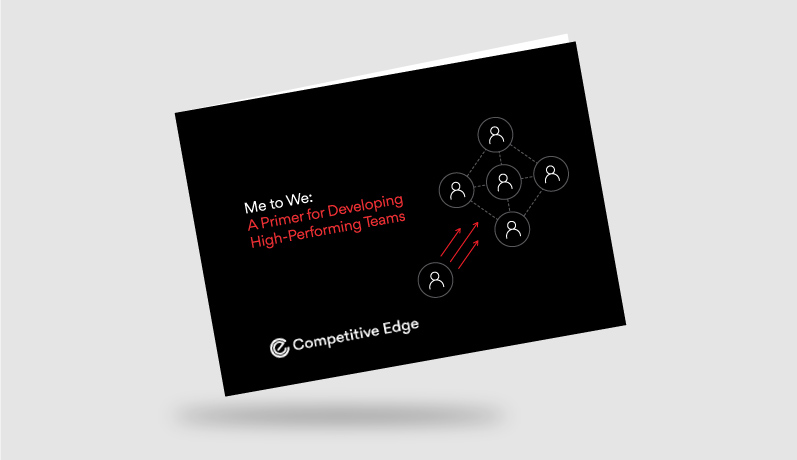In a business environment, understanding the personalities of leaders and team members is crucial in promoting team cohesion. Personality profiling is a powerful tool that helps collect critical data about how individuals handle challenges, work in a team and control their emotios..
Profiling attempts to simplify the complexities of human personalities and although it is extremely useful, this simplification can present challenges. For example, an oversimplification of results can lead to an oversimplification of interpretation, which in turn leads to stereotyping. This must be avoided.
This article delves into the Dominance (D) personality type within the DiSC model, examining the dichotomy between the Nice D and the Nasty D and offering strategies for developing effective leadership traits. Although we are not necessarily recommending the DiSC model above other profiling tools. Among the various tools available, it stands out as one of the tools most used in the workplace. And therefore, helps us illustrate how stereotyping can occur if results are not interpreted with sufficient rigour.
Personality Profiling and Its Importance
Personality profiling is the process of evaluating an individual’s character traits to predict their behaviour in various situations. This is particularly useful in business for improving candidate assessment, team dynamics and leadership development. Many personality profiling tools are available, including the Big Five Personality Test, the Enneagram, and the Myers-Briggs Type Indicator (MBTI). Each has benefits and limitations and each categorises personality types differently.
One of the most used is the DiSC model. It categorises personalities into four main styles: Dominance (D), Influence (i), Steadiness (S) and Conscientiousness (C). Each style represents a unique way of interacting with the world and other people. The Dominance (D) style is characterised by assertiveness, control and a focus on results. D types are ambitious and competitive, always seeking to take advantage of opportunities and striving for accomplishments.
Understanding Dominance in DiSC
Individuals with a D personality are people who naturally assume leadership positions. They are motivated to make quicker decisions and drive progress. They are goal-oriented, assertive and capable of taking charge in challenging situations. Their ability to work independently and their preference for quick action makes them highly effective in achieving results. The strengths of D types are invaluable in business. Their leadership skills help in setting clear goals and expectations, driving the team towards success. Their assertiveness ensures that obstacles are swiftly overcome and their focus on results contributes to the overall growth and productivity of the organisation.
However, despite their strengths, D personalities can exhibit stubbornness, impatience and a lack of empathy. Their tendency to take control can lead to conflicts and their low tolerance for others’ feelings and ideas can hinder teamwork. D types may struggle with collaboration, as their urgency and impatience can create stress for team members. Their focus on achievement can mean they overlook important details, leading to potential oversights and errors.
The Nice D vs. the Nasty D: A Dichotomy in Dominance
The Nice D is a D type who effectively leverages their strengths while managing their limitations. For example, in a team meeting, a Nice D would assertively present their ideas but also actively listen to others’ input and consider their feelings. They would be open to feedback and willing to adjust their approach if necessary. The Nasty D, on the other hand, allows their negative traits to dominate. In the same team meeting, a Nasty D might dismiss others’ ideas, impose their solutions without discussion and create a tense atmosphere through impatience and lack of empathy.
While both Nice D and Nasty D share core characteristics of ambition and assertiveness, their impact on the team and organisation differs significantly. Nice D personalities recognise the benefits of a collaborative and motivating environment and seek to promote it, while Nasty D individuals create conflict and stress, ultimately hindering team performance.
For instance, in a scenario where a project is behind schedule, a Nice D would take charge, set clear goals and motivate the team while considering their feelings and input. They would listen to suggestions and incorporate valuable feedback, ensuring the team feels valued and motivated. Conversely, a Nasty D in the same situation would likely impose their solutions without seeking input, criticise team members for not meeting deadlines and create a stressful atmosphere that diminishes morale and productivity.
Of course, these personality types are rarely binary. A person’s behaviour can change depending on the context, with a Nice D demonstrating Nasty D traits when under extreme pressure, for example.
This is where self-awareness and emotional intelligence come in.
Developing a Nice D Personality
To transition from a Nasty D to a Nice D, individuals need to cultivate self-awareness, active listening, and empathy. Self-awareness helps them recognise when their assertiveness turns into overbearing control. They can achieve this through regular reflection, seeking feedback from peers and subordinates, and developing emotional intelligence. By understanding their impact on others, D types can adjust their behaviour to be more inclusive and considerate.
Adopting a ME to WE mindset, such as practicing active listening, is crucial. By valuing others’ input and perspectives, D types can make more informed decisions and foster a collaborative environment. This involves not only hearing what others say but also understanding their underlying concerns and motivations. Encouraging open communication and creating an environment where team members feel safe to express their ideas can significantly enhance team dynamics and performance.
Developing impulse control and empathy (key attributes of emotional intelligence) can transform a Nasty D into a Nice D. Understanding the needs and emotions of team members helps in building stronger relationships and a more cohesive team. D types should strive to see situations from others’ perspectives and appreciate the contributions of their colleagues. This can be particularly challenging for D types, who often prioritise results over relationships, but it is essential for effective leadership.
Practical Applications for Business Leaders
Business leaders should balance teams with diverse personality types. Understanding the strengths and weaknesses of each type helps in assigning roles that maximise productivity and harmony. For example, pairing D types with individuals who have Influence (i) or Steadiness (S) personalities can create a balanced team where assertiveness is tempered by empathy and collaboration, so long as the D is adopting a WE mindset.
Implementing conflict resolution strategies is essential for managing D types. Encouraging open communication and mutual respect can prevent conflicts from escalating. This includes setting clear expectations for behaviour, fostering a culture of respect and providing training on effective communication and conflict resolution techniques.
Organisations should invest in leadership development programs that focus on emotional intelligence, active listening and empathy to help D types become more effective leaders. These programs can include workshops, coaching and mentoring to support D types in developing the skills needed to lead with both strength and compassion.
In conclusion, D-type personalities are crucial to any organisation because they are goal-oriented and assertive. However, balancing their strengths with empathy and patience is essential for fostering a positive work environment. By recognising the importance of listening to others and managing their limitations, D types can transform from Nasty D to Nice D, leading their teams more effectively and driving organisational success.

